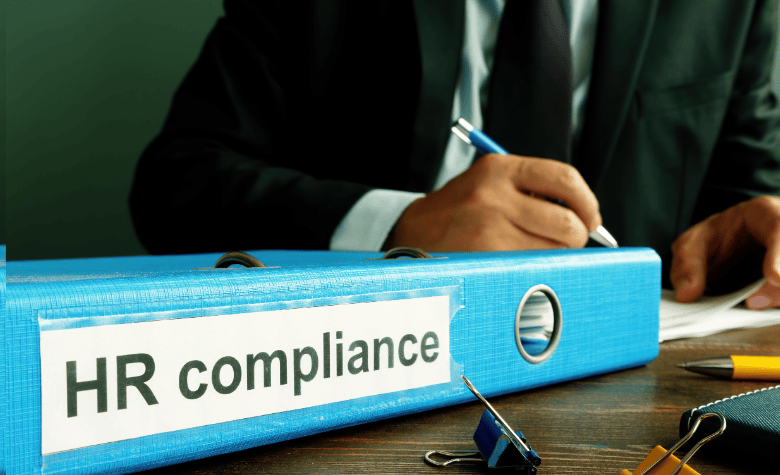Successfully and legally managing a workforce is fundamentally dependent on HR compliance. This includes ensuring that a company complies with all local, state, and federal labor regulations, as well as internal rules and regulations that govern the treatment and management of employees. Ignoring regulations can have serious consequences, including lawsuits, fines, and reputational damage. Labor compliance is not just about avoiding sanctions but also about creating a fair, open, and courteous work environment for HR professionals. Compliance demonstrates professionalism and protects the company and its employees from unnecessary risks.
Comply with State and Local Policies
In addition to federal regulations, HR managers must also coordinate with state and local labor policies, which can vary widely from region to region. For example, wage laws, paid sick leave policies, anti-discrimination laws, and final pay laws vary widely from state to state. Therefore, an HR compliance checklist should include regular checks for state-specific labor regulations. Companies with multiple locations need to ensure that they are compliant at each location; otherwise, it will lead to more problems. To avoid mistakes, it is necessary to stay up to date with the latest information through government websites, HR organizations, and local legal sources.
Maintain Proper Employee Records
Proper records are an important part of HR compliance and can protect a company in the event of legal proceedings or conflicts. From job applications and I-9 forms to performance reviews and disciplinary records, every work-related document must be kept securely and accurately. Companies must also maintain records according to legal retention periods. Relevant legislation mandates the retention of payroll records for a specific number of years. Another important consideration is confidentiality; employee personal data must be properly managed to prevent unauthorized access or disclosure. In addition, well-organized documentation can also help improve internal efficiency and transparency.
Ensure Proper Recruitment and Onboarding Processes
Human resource policies must comply with anti-discrimination and equal opportunity regulations. Selection procedures, job postings, and interviews should be fair, objective, and well-documented. Once candidates are hired, the onboarding process should include the necessary legal notices, accurate descriptions of company policies, and supporting documents. New employees should be aware of their rights, workplace conduct, safety policies, and benefits. Compliance from the start can reduce legal risks and foster good working relationships. To meet all legal and organizational standards, HR should ensure that each new employee follows a standardized onboarding checklist.
Classify Employees Correctly
Misclassified employees can land you in significant legal trouble. One of the most common compliance issues is when a company incorrectly labels an employee as an independent contractor instead of an employee or fails to accurately record exempt and non-exempt status under payroll. Misclassification can lead to back taxes, denied benefits, and unpaid work. HR teams should thoroughly review job responsibilities and payroll systems based on guidance from agencies such as the Department of Labor and the Internal Revenue Service. Keeping job descriptions up to date and ensuring that each position is classified correctly can help companies stay compliant and avoid hefty fines.
Maintain Time and Payroll Compliance
Wage and hour laws cover minimum wage, overtime, meal and rest breaks, and the timely payment of employee salaries. HR departments must ensure that payroll is processed legally and that timekeeping systems accurately record hours worked. This includes being alert to changes in federal, state, or municipal minimum wage standards. Companies should also avoid policies that allow for illegal deductions or ignore off-peak pay. Training employees in timekeeping practices and conducting regular payroll audits can help ensure that companies are compliant and that employees are treated fairly.
Promoting a Harassment-Free Workplace
In addition to the serious impact workplace harassment can have on employee morale, it also carries significant legal risks. Companies that want their HR departments to comply with the rules should have clear anti-harassment policies, provide regular training to managers and employees, and establish clear protocols for reporting and handling complaints. Training should address workplace respect, bullying, and sexual harassment. HR departments should also handle complaints of misconduct fairly and promptly. A well-enforced anti-harassment policy protects employees, improves company culture, and demonstrates a company’s commitment to creating a respectful and safe workplace.
Maintaining a Safe Work Environment
Maintaining the health and safety of your employees is both a moral obligation and a legal obligation. Depending on the industry, Occupational Safety and Health Administration (OSHA) regulations set specific safety requirements that companies must adhere to. Safety training, incident reporting, emergency response plans, and record keeping for OSHA compliance all rely heavily on HR. Safety in a company culture starts with awareness: ensuring that employees know their rights and responsibilities. HR departments must also follow safety procedures, conduct regular workplace inspections, and keep communication channels open so that employees can report risks. A safe workplace helps employees stay healthy and reduces legal risks for work-related injuries.
Conclusion
HR compliance is an ongoing effort that requires focus, flexibility, and knowledge of current employment laws. From hiring to firing and everything in between, every phase of an employee’s life must meet legal guidelines and the highest standards. Staying organized, proactive, and legally secure requires a roadmap driven by a carefully maintained HR compliance checklist. Regular evaluations, training, administration, and audits enable HR professionals to protect companies from costly legal risks and create a fair, safe, and motivating environment. The ultimate goal of compliance is to provide the foundation for ethical and efficient HR management, not just to set the rules.
FAQs
1. Why do companies need HR compliance?
HR compliance advocates for a fair, safe, and inclusive workplace and helps protect companies from fines, lawsuits, and brand damage.
2. How frequently should companies conduct HR compliance audits?
HR compliance audits are best conducted annually or biennially. However, more frequent assessments may be necessary following major organizational changes or legislative changes.
3. What factors pose the greatest compliance risks for HR departments?
Typical risks include improper record-keeping practices, misclassification of employees, non-compliance with wage and hour regulations, and ignoring allegations of harassment.
4. How can HR departments stay up to date with changing labor regulations?
Legal documents, professional HR associations, participation in training, and consultation with labor law experts can help HR professionals stay up to date.
5. What should an HR compliance checklist include?
The checklist should cover recruitment policies, employee classification, wage and hour compliance, paperwork, workplace safety, anti-discrimination laws, and benefits administration.




